All Primary 1 children receive a free Bookbug P1 Family Bag during the winter term. The bag is packed full of exciting items for you and your child to have fun playing with together. It's also a great resource to turn homework into little games you can play together.
What's in the bag?
Take a peek inside, and you will find:
- Penelope Snoop Ace Detective by Pamela Butchart and Christine Roussey
- My First Book of Minibeasts illustrated by Zoë Ingram
- Five Bears by Catherine Rayner
- A whiteboard and whiteboard pen
- Colouring pencils
- P1 Activity Book full of fun activities all about the books to encourage further reading and engagement
- The Bongles and the Crafty Crows by Oscar Van Heek and Dean Queazy, in partnership with the Scottish Government and Education Scotland.
Whiteboard games
Game #1: Secret messages
Ask your little one to write you a secret message on their whiteboard, then hide it somewhere for you to find. When you find it you can write a message back, hide the board again and then ask them to find it and see if they can read your message. You can also both draw pictures to make your message easier to understand.
Their whiteboard can also be a fun way to get them to do their spelling homework.
Game #2: Guess the word
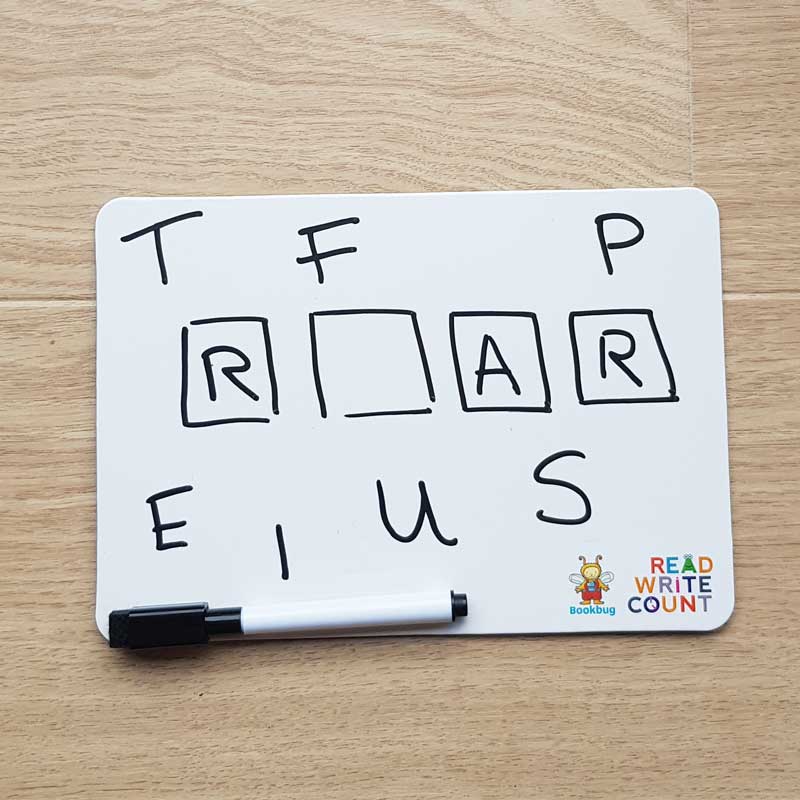
Think of a word and draw boxes on the board for each of the letters. Ask your child to guess letters that could be in the word. If they get a correct letter, write it in the box where it belongs. If the letter isn’t in the word, write it somewhere else on the board. If they can guess the word you’ve chosen before the board is full, they’ve won!
Game #3: Half and half
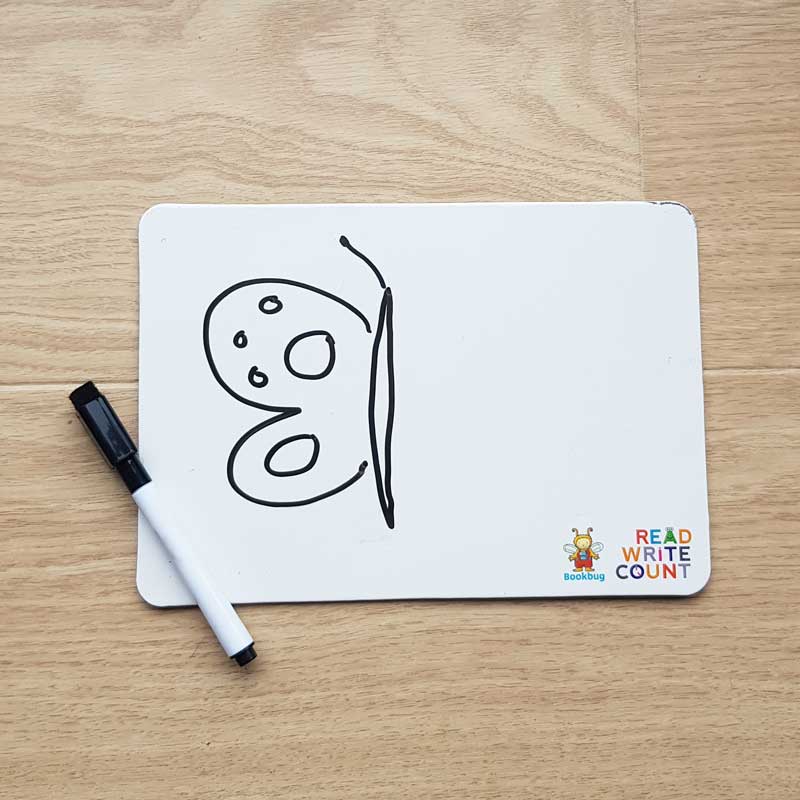
To help your child learn about shapes and symmetry, use the whiteboard to draw half of a picture (e.g. the outline of a butterfly, a ladybird, an octopus or a house) and get them to draw the other side. Swap roles so they draw the first half of the picture and you have to finish the drawing.
You can find more tips for making maths fun here and on the Maths Week Scotland website.
Penelope Snoop Ace Detective by Pamela Butchart and Christine Roussey
When Sidney the Smelly Sock Snake goes missing, Penelope is first on the case. Reluctantly followed by her assistant Carlos the dog, their adventure takes them as far as outer space! This fun detective story is brilliant to read aloud, with striking neon-pink artwork.
You can watch a video of author Pamela Butchart reading Penelope Snoop on the Scottish Book Trust website.
Game #1: Fridge magnets
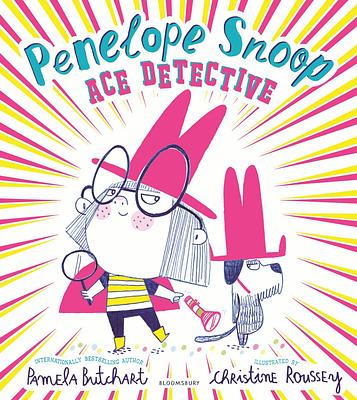
There are lots of little details to notice in this book, like the letter magnets on the fridge in the kitchen. Can your child make any words from the letters? They could write the letters on their whiteboard first.
Game #2: Sock puppet show
Sidney the Smelly Sock Snake is made from… a sock! Why not having a go at making a sock puppet with your child? It’s very easy! This page on the Tiny Happy People website shows you how, and has tips for making the most of playtime with your sock puppet too.
Game #3: Counting hats
There are lots of bright pink hats in the book. Can your child count how many there are? They could even have a go at making their own detective hat from paper – this page on WikiHow shows you what to do.
My First Book of Minibeasts by Zoë Ingram
This beautiful picture book is perfect for little explorers who love spotting creepy crawlies. Easy-to-read facts accompany bright illustrations with many common insects to find when you’re out and about.
You and your child can watch a video of My First Book of Minibeasts being read aloud on the Scottish Book Trust website.
Game #1: Draw a minibeast
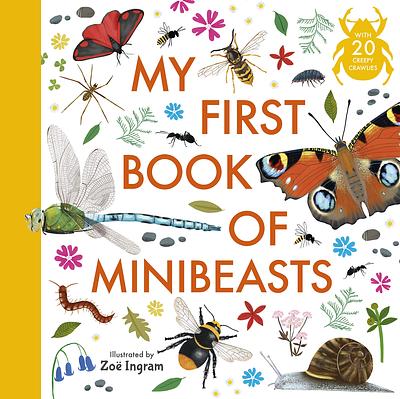
There are lots of lovely pictures of creepy-crawlies in the book. Can your child draw their favourite? Have a chat together about the creature they draw. Where does it live? What does it eat? They could even give their creature a name and make up a story about them.
Game #2: Fact or fiction
There are lots of interesting facts about minibeasts in the book. Take it in turns with your child to share two real facts and one made up one and see if the other player can guess which is the fake fact.
Game #3: Minibeast maths
There are lots of ways you can use this book to help your child with their maths in a fun, creepy-crawly way! For example, you could ask them to look at the sizes of the different insects and see which is the biggest. Which lives the longest? Which lays the most eggs?
Five Bears by Catherine Rayner
A lovely book to cosy up with, all about making friends in unexpected places. There are five different bears to spot in this heartwarming story which celebrates friendship and diversity.
You and your child can watch a video of Five Bears being read aloud on the Scottish Book Trust website.
Game #1: Name game
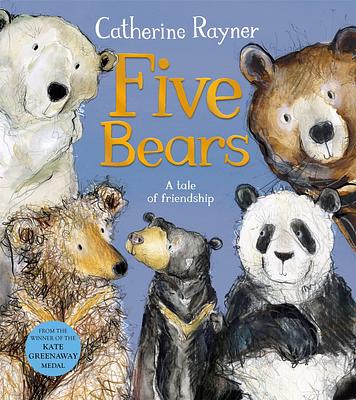
The bears in the book don’t have names – what would your child call each bear? Maybe they could draw the bears using their colouring pencils, and write their new names underneath. Take a look at the different ways the bears are drawn in the book for inspiration – for example, one bear has scribbled curly fur, which is really fun to draw.
Game #2: Friends to the end
The bears in the books all become friends. Reading this book is a good opportunity to talk to your child about their friends – what do they like to do together? Our page on encouraging your child to make friends has advice on how you can support your child to make friends at school.
Game #3: Bear facts
Can you help your child work out what kind of bear each of the bears in the book is? Panda and polar bear are quite easy to spot, but what about the others? If you’re not sure, you could have a look online – the National Geographic Kids website is a good place to start.
The Bongles and the Crafty Crows
The Bongles are colourful bouncy creatures who reuse, repair and upcycle objects that wash up onto the shores of their island home. They love turning trash into treasure! In The Bongles and the Crafty Crows, the Bongles have to protect their treasures from the crows – and through their efforts, young children can learn how to keep their private information safe using passcodes and passwords.
Your child can watch an animated version of the story and take part in an interactive quiz on the Bongles website.
S urrainn do leanabh luchdadh a-nuas leabhar Na Bongles agus Na Starragan Carach is dreach beò den sgeulachd a choimhead ann an Gàidhlig air làrach-lìn Na Bongles.
Accessible versions of the P1 Bookbag books
CALL Scotland have produced accessible versions of the P1 Bookbug books as well as symbol resource sheets that can be found on the Scottish Book Trust website. The symbol resources can be used with pupils who need additional support and those with communication difficulties, as well as children with English as an additional language (EAL).
 Activities & Play
Activities & Play Behaviour
Behaviour Childcare
Childcare Development & Growing Up
Development & Growing Up Family, Friends & Relationships
Family, Friends & Relationships Feeding Your Baby
Feeding Your Baby Food & Eating
Food & Eating Health & Safety
Health & Safety Mental Health & Wellbeing
Mental Health & Wellbeing Money & Work
Money & Work Online Behaviour & Safety
Online Behaviour & Safety Pregnancy & First Days
Pregnancy & First Days School & Education
School & Education Sleep
Sleep

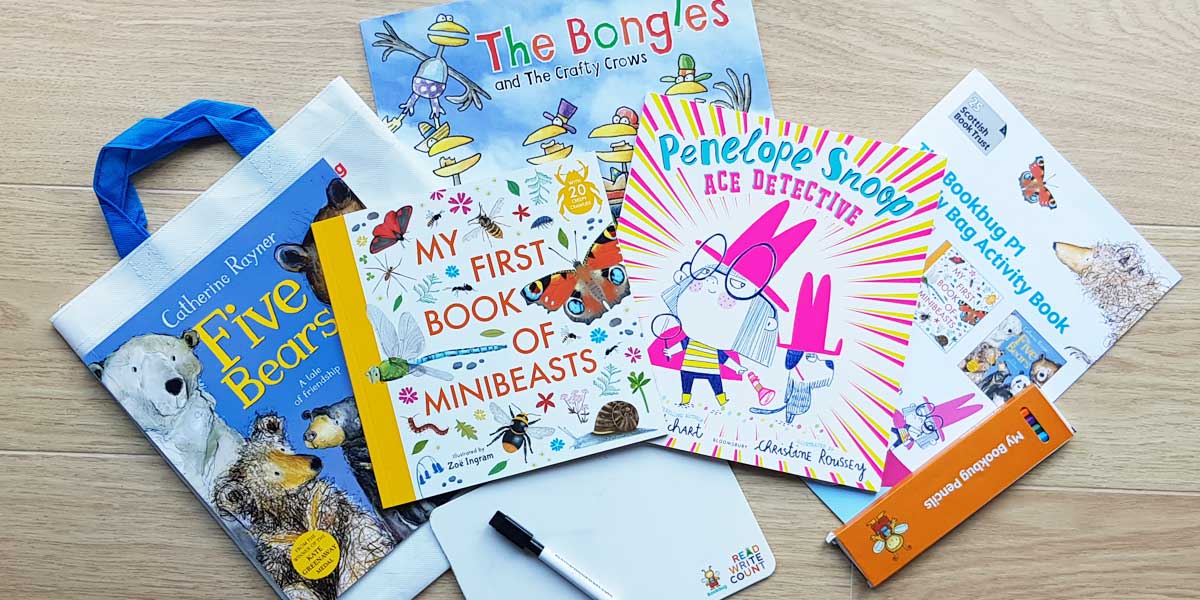
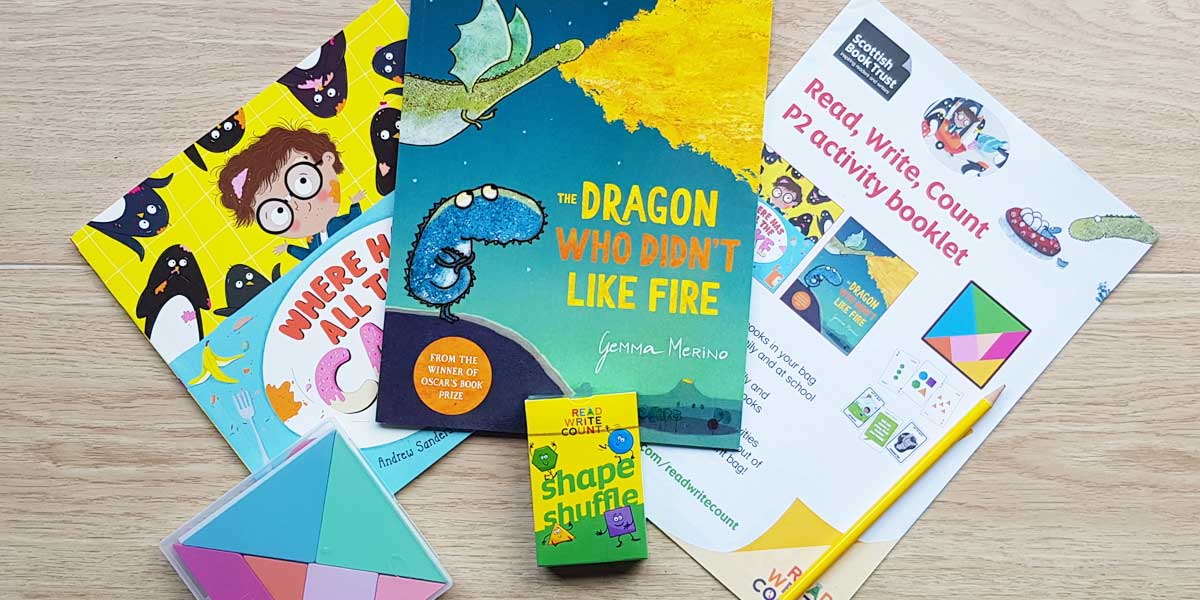

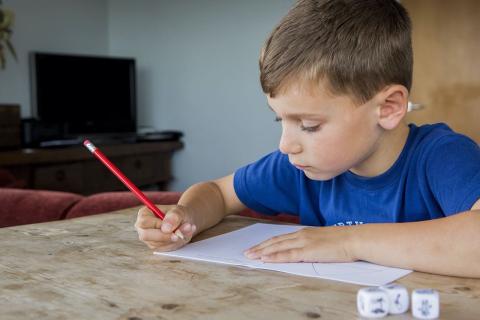

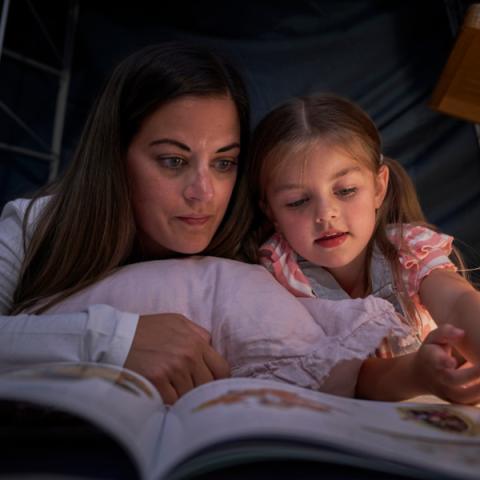

 Childcare
Childcare
 School & Education
School & Education